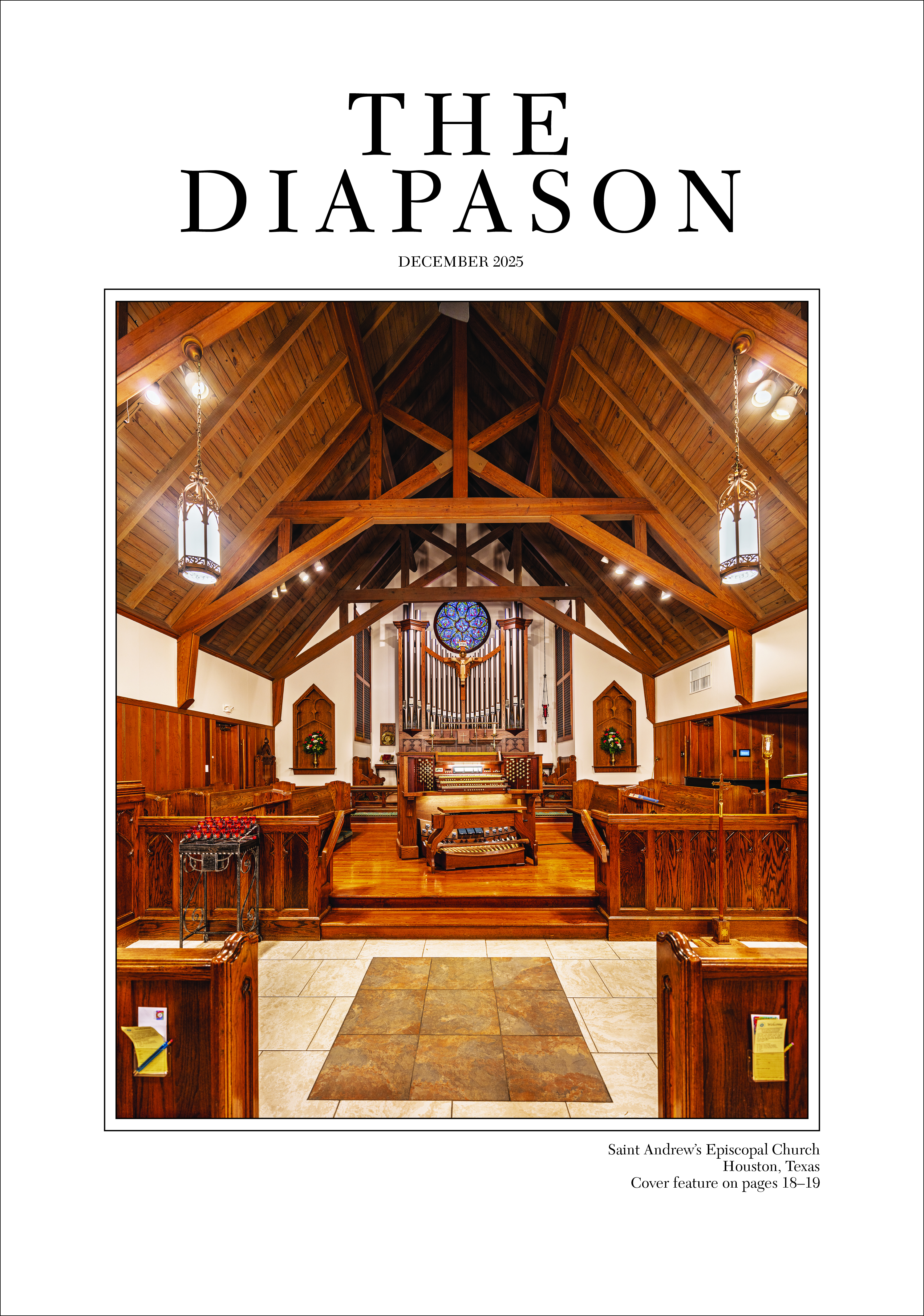The organ featured in this video was built by Lewtak Pipe Organ Builders in the city of Horsens, Denmark in 2013. The specification called for 26 stops, including a 32’ Contra Bourdon in the pedal. The church building offered excellent acoustics with approximately four seconds of reverberation in an intimate, not-too-large room of very modern, typical Scandinavian design. The key action is mechanical and the stop action is electric with electronic memory. Lewtak became the first-ever American firm to build an instrument in Denmark—a country famous for consistently great organs and meticulous builders.
Filip Presseisen is the winner of the 2015 International Cinema Organ Competition in Berlin, Germany, as well as the first prize recipient at the Feliks Nowowiejski International Organ Competition in Poznan, Poland. Regarded across Europe as one of today’s finest theater organ performers, Dr. Filip Presseisen serves as head of the Instrumental Department at the Archdiocesan School of Music in the historic city of Krakow, Poland. Dr. Presseisen has been heard in solo recitals at many major venues in his native Poland and throughout Europe. In addition to traditional organ concerts, he often presents wholly improvised performances accompanying silent classic films from the last century. Known for his creative programming, innovative use of the organ, and charming demeanor, Dr. Presseisen is a true rising star among young classical musicians and has quickly made a name for himself as one of the finest young Polish organists on the scene today.
For information: https://www.lewtak.com/

